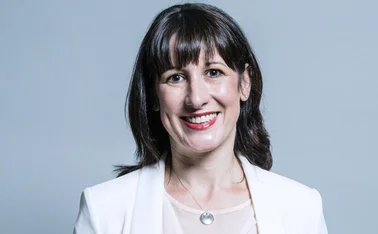
How the pandemic transformed travel insurance

The impact of the Covid-19 pandemic on travel insurance and the lingering impact of wings being clipped to slow the spread of the virus.
Turn your mind back to the pandemic… if you dare.
Closed airports, cancelled trips, and closed borders. Outside of healthcare, of all the industries that were affected by Covid-19, few were hit more suddenly than the travel sector; and, by extension, travel insurance.
According to a report by Research & Markets, the UK travel insurance market grew in 2019 to reach £614.2m in gross written premiums.
Before the pandemic, the Association of British Insurers reported in 2019, travel insurers paid 471,000 claims worth a total of £377m to travellers who needed help while they were abroad with £197m of this covering the cost of emergency medical treatment, and £141m for cancellations.
Competition was healthy, with Defaqto data showing 236 providers offering annual trip policies and 215 for single-trip in 2018.
A lot of our counterparts in this space struggled,” he said. “Some had to furlough staff, some don’t even exist anymore because of the lost income.
Robert Amati, managing director of Millstream Insurance
Consumer complaints levels had been relatively steady. There were 4,386 complaints reported to the Financial Ombudsman Service in 2019, with uphold rates at 33%.
With the onset of the pandemic, the market experienced previously unheard-of changes, sudden loss of business meant that existing policies had to be adjusted or refunds offered, and many firms were forced to make difficult decisions regarding their portfolios.
Several ceased to offer new policies while the restrictions were in place. Some, however, elected to leave the space altogether.
Early turbulence
In the years following the onset of the pandemic in early 2020, the number of providers offering cover fell to 193 annual providers and 179 single-trip providers in 2023, according to Defaqto.
The number of providers began to creep up again in 2023, with 64 providers entering the travel insurance market in 2023, but this dropped in 2024, with only 17 new travel providers joining the party.
In 2023 there are just 211 providers serving either part or both in the market – far fewer than the 243 in 2018.
The pandemic was clearly a huge factor here, with Robert Amati, managing director of Millstream Insurance, saying that, although Millstream survived Covid and continued to offer cover, many didn’t.
“A lot of our counterparts in this space struggled,” he said. “Some had to furlough staff, some don’t even exist anymore because of the lost income.”
There could be other factors at play, however.
Kelly Ward, country manager, UK and Ireland at Axa Partners, warns the industry not to drop the blame for the exodus purely at the feet of Covid.
He says: “Brexit was the trigger for the reduction of insurers operating in the UK market, rather than the pandemic.
“With that said, if the UK was seen as a more favourable market to make profits, firms may have worked through the additional layer of complexity brought about by Brexit.
“We suspect that the difficulty some firms faced in maintaining a profitable business, informed their decision to exit the UK market.”
Regarding how the travel market has bounced back, Ward says that “it is still adjusting” and that Axa Partners doesn’t “see or anticipate a fundamental change in the product offering in the near term”.
Products
On the product side, while there may be fewer providers competing for business, the range of cover is greater.
The number of travel insurance products available on the market increased during the pandemic, from 976 annual products available in 2018 to 1065 in 2023.
Single trips experienced a similar increase, from 952 to 1076 in the same period.
However, it is worth noting this increase in products has been taking place for some time, from 462 in 2013.
Anna-Marie Duthie, travel insurance expert at Defaqto, says much of this increase can be attributed to providers adopting flexible or ‘tiered’ products alongside their standard offerings.
Duthie adds Defaqto is “seeing many more tiered products, more product offerings from one single provider”, highlighting one provider which offered 40 different “product permutations” on the same policy.
She notes the insurers did this “not only to offer the consumer more choice”, but also to place themselves higher on price comparison websites.
Greg Lawson, head of travel insurance at Collinson Insurance, saw a similar shift regarding digital offerings, seeing an acceleration in consumer acclimatisation to contactless solutions.
He says the “contactless solutions adopted at the time” have led to customers being “far more familiar with digital solutions that give businesses greater resilience and scalability to deal with spikes in volume”.
Lawson also points to tele- and video medicine as an increasingly accepted way to assess medical incidents abroad, as an example.
Travel habits
Not only did the pandemic affect business practices, it also changed the way that consumers travel, and, by extension, affected the features available for sale from insurers.
On the trip side, Maisie Blewitt, head of commercial at Transfer Travel – an online marketplace for holidays – says that the firm sees “a lot of last-minute trips” going through its website since Covid.
On the insurance side, Ward says Axa Partners has “seen that people have been more likely to buy travel insurance for their trips”, stating the firm has seen “roughly double the volume” among existing retail channels.
He continues: “We feel this was down to a few reasons, including an increased fear of illness, as well as fear of countries going back into lockdown and the impact this would have on our customers’ ability to travel.”
Andrew Tolman, head of travel insurance at Allianz Partners, says the pandemic “shifted consumer priorities”, with the disarray placing a heightened focus on products that offer protection against disruptions, “such as cancellations or travel interruptions”.
He says: “This change has driven higher demand for travel insurance, with travellers seeking comprehensive coverage that addresses a broader range of potential issues.”
Amati says Millstream saw an increase in multi-person policies following the easing of travel restrictions, pointing toward an increase in large family holidays once travel was once again allowed.
He says: “There was disposable income that people wanted to get rid of go and travel. So there were more requests around kind families on big value holidays, which was quite interesting.”
Ward says Axa Partners “saw a higher proportion of single-trip policies being sold post-Covid”, while sales of annual policies took longer to recover.
He adds: “We feel that a fear of potential further pandemics played a part in this, with customer’s only wanting to pay for the holiday they’ve booked, rather than considering future trips as well.”
Along the same lines, Lawson notes Collinson saw “an increased focus on domestic destinations” due to “nervousness around overseas travel”.
He says: “Travellers became more cautious about health and safety which did see a spike in the sale of travel insurance, although it took a couple of years for the annual multi-trip market to return to pre-Covid levels.”
In terms of features, Duthie says Defaqto has noticed an increase in travel insurance policies featuring cover for missed connections.
Duthie said “it’s hard to say” if that is specifically related to Covid, or how airports and airlines have struggled to get going again, but believes it could be related to an increase in the granularity of insurers’ policy wordings which occurred during the pandemic.
She says: “Part of it was that policy wordings have become clearer. It became clear that the wordings were becoming more specific around departures, your connecting flights, the kind of detail they were going into increased.
“Maybe that came out of Covid, from when people were more concerned with the levels of coverage they had, and the insurers were trying to make sure that they are covering off all bases.”
In 2018, 50% of providers had missed international connections covered on their annual policies.
In 2024, this had increased to 68%, with 15% including it as an optional add-on.
A similar trend can be seen in missed inbound departure, which was available as standard from 61% of providers in 2018, and 81% in 2024.
Financial consequences
As well as altering the way that consumers and businesses approach travel insurance, the pandemic had far-reaching financial consequences for providers that dabbled in this line of business.
Lost revenue due to travel restrictions was cited in numerous full-year results in 2020, with firms staring down the barrel of a year of reduced businesses due to the lack of demand for travel policies.
Tolman says now that travel demand is back to pre-Covid levels, the sector is on a “path to recovery”.
He adds: “As travel restrictions lifted, the desire to travel remained strong despite economic uncertainties and increased costs.”
On the pricing side, Tolman says many firms were pressed to increase their premiums in order to stay afloat amid interrupted business and increasing claims costs: “Inflation has influenced pricing strategies within the industry. Insurers have had to adjust premiums to manage the rising costs associated with claims and operational expenses.”
He adds this inflation has pushed insurers to focus on “providing products that address not only medical emergencies but also travel disruptions”.
Lawson, however, characterises the response as “a mixed recovery”, in terms of policy sales and premium.
“In terms of policy sales and premium, the recovery took two to three years with premium increases of around 20 to 30% in that time across multiple products and sectors.
“However, in the last 18 months, the market has stabilised with operational costs being more predictable, travel patterns returning to a new ‘normal’ and medical and holiday cost inflation settling down.”
On pricing, Amati argues pre-Covid pricing levels in the retail travel space were “unsustainable”.
“The expectation was that they [prices] would come to pre-Covid levels, but I just can’t see that happening, because they weren’t sustainable,” he says.
“I would like to think that the industry, certainly the travel industry, is on a journey to make sure that they are sustainably pricing [policies] and selling the value of the product to the consumer.”
On the claims side, Neil Heasman, operations director at Charles Taylor Assistance, says travel cancellation claims are “still the most common type of travel insurance claim” and the cost of such claims has risen “quite significantly since the pandemic”.
Heasman reveals that in 2019 Charles Taylor Assistance’s average travel cancellation claim was £900, and that today that figure sits closer to £1100.
He says that this is a “combination of inflationary pressures and the fact that holidaymakers are now travelling further and for longer”, again pointing to the prices charged by providers needing to continue to keep track of inflation at a time when US President Donald Trump is embarking on a trade war that could cause further price spikes.
Consumer understanding
Another unexpected symptom of the pandemic that some have cited as having an ongoing impact in the way the travel insurance market works today is that consumers were forced to engage with their travel insurance policies more, leading to heightened understanding.
Amati says: “Covid gave consumers a lot of time to get to grips with policies, and understand what they really want, and understand the insurance process a bit more.”
He adds it gave Millstream some breathing space to discuss policies further with consumers, saying: “It gave us an opportunity to have grown-up comments cover conversations with consumers, and putting coverage levels at the forefront, which is important.”
Blewitt shares this view, saying: “We’re pushing into the era of the savvy traveller, they’re more educated; they know what they can do, what they can’t do and they know their rights.”
She states that, ever since the pandemic, customers “can’t really be in a position anymore to just hope for the best, you need to know your stuff”.
Consumer’s understanding their policies more comprehensively can perhaps be evidenced by the level of complaints that have been submitted to Financial Ombudsman Service since the pandemic.
In 2019, the Financial Ombudsman Service received 4,386 complaints about travel insurance and in 2020 that increased fourfold to 12,314, before decreasing to around half that number - 6,865 - in 2023.
Not only are complaints figures notable – having not yet decreased to pre-pandemic levels – the uphold rates for travel complaints since the pandemic have been steadily climbing.
The uphold rates are 33%, 38% and 44% for 2019, 2020 and 2023, respectively.
Sam Richardson, deputy editor of Which? Money, says while it’s “difficult to attribute this directly to the pandemic”, these figures demonstrate that the public is at least more clued up on what their coverage allows them to claim for.
Richardson also points to claims acceptance levels, adding: “Travel insurers fare comparatively poorly against other insurance products according to Financial Conduct Authority data – though acceptance rates do seem to have improved slightly between 2022 and 2023.”
Has the industry learnt lessons?
Jenny Ross, editor of Which? Money, feels that travel policies are still “complex documents filled with jargon”.
She says: “Our latest research shows that many travellers still have significant misconceptions about the kind and extent of cover typically provided.”
Ross traces these issues back to a “flawed sales process” in which “firms are failing to support customer understanding of complex terms”, which, in turn, “can sow the seeds for disaster”.
She says Which? wants “to see the FCA step in and take tough enforcement action against insurers that are failing consumers”.
Future
Looking to the future, while the number of people wanting to get away from it all has returned to pre-Covid levels, prices continue to remain above 2019 levels, with the industry boasting more products, albeit fewer providers.
There are silver linings, however, with Lawson saying that “there has been a growth in insurtech interest in the sector, focused on parametric solutions for travel and baggage delay”.
New entrants such as Gigasure – a travel-focused MGA which aims to be the “the next gen of insurance brokers”, according to founder and CEO Ernesto Suarez – launched late last year with a focus on parametric and digital offerings.
Gigasure aren’t the only insurtech hedging its bets on travel – with Urban Jungle announcing an expansion into travel in January – potentially setting the stage for further disruptors to enter a market which has seen it’s providers shaved down by the pandemic.
Big names have also made moves demonstrating faith in the sector, with Zurich moving to acquire AIG’s global travel book last year, combining it with its own brand CoverMore.
Cara Morton, CEO of Zurich global ventures, said at the time of the deal that the firm aims to “go beyond traditional travel insurance and assistance”, which demonstrates a level of growing confidence in the sector from large firms.
With potential disruption from insurtechs down the road; diversification of product offerings, and an increase in comprehension from its customers; coupled with fewer providers; an aftershock in premium and claims costs; and high complaint levels; it’s clear that the recovery of the travel insurance sector is still ongoing.
Time will tell if the sector has learned lessons and the flight stays on course – or if it’s just circling the runway.
Only users who have a paid subscription or are part of a corporate subscription are able to print or copy content.
To access these options, along with all other subscription benefits, please contact info@postonline.co.uk or view our subscription options here: http://subscriptions.postonline.co.uk/subscribe
You are currently unable to print this content. Please contact info@postonline.co.uk to find out more.
You are currently unable to copy this content. Please contact info@postonline.co.uk to find out more.
Copyright Infopro Digital Limited. All rights reserved.
As outlined in our terms and conditions, https://www.infopro-digital.com/terms-and-conditions/subscriptions/ (point 2.4), printing is limited to a single copy.
If you would like to purchase additional rights please email info@postonline.co.uk
Copyright Infopro Digital Limited. All rights reserved.
You may share this content using our article tools. As outlined in our terms and conditions, https://www.infopro-digital.com/terms-and-conditions/subscriptions/ (clause 2.4), an Authorised User may only make one copy of the materials for their own personal use. You must also comply with the restrictions in clause 2.5.
If you would like to purchase additional rights please email info@postonline.co.uk









